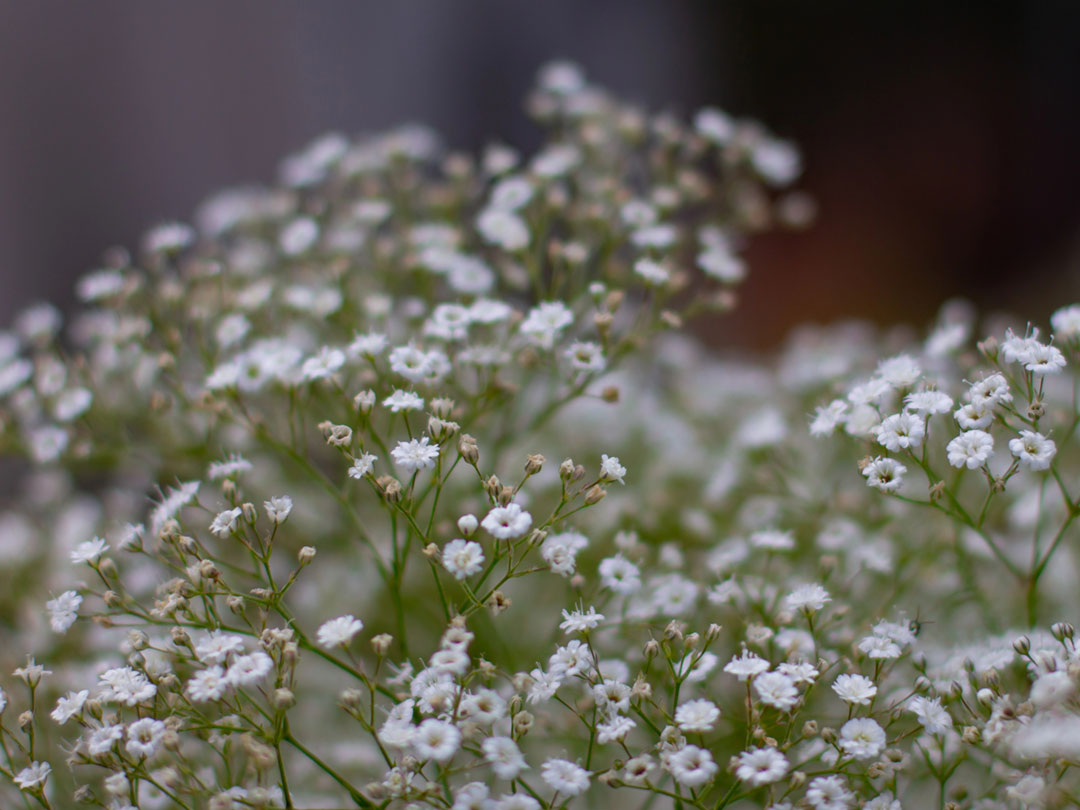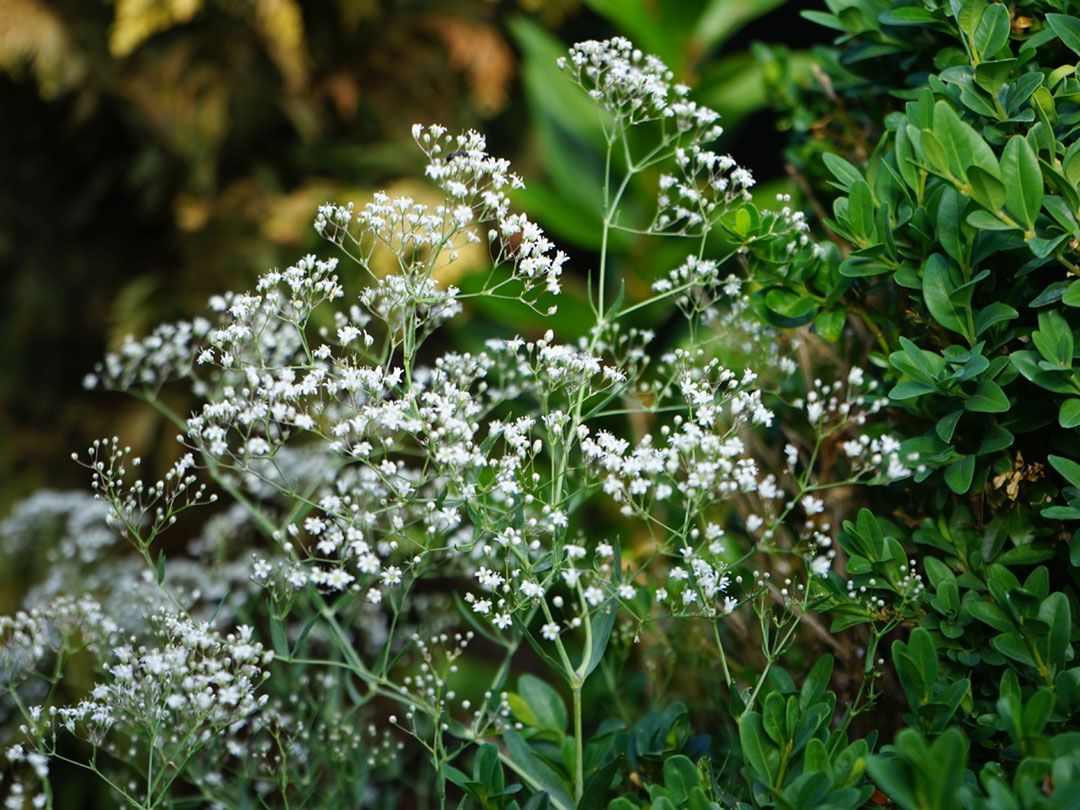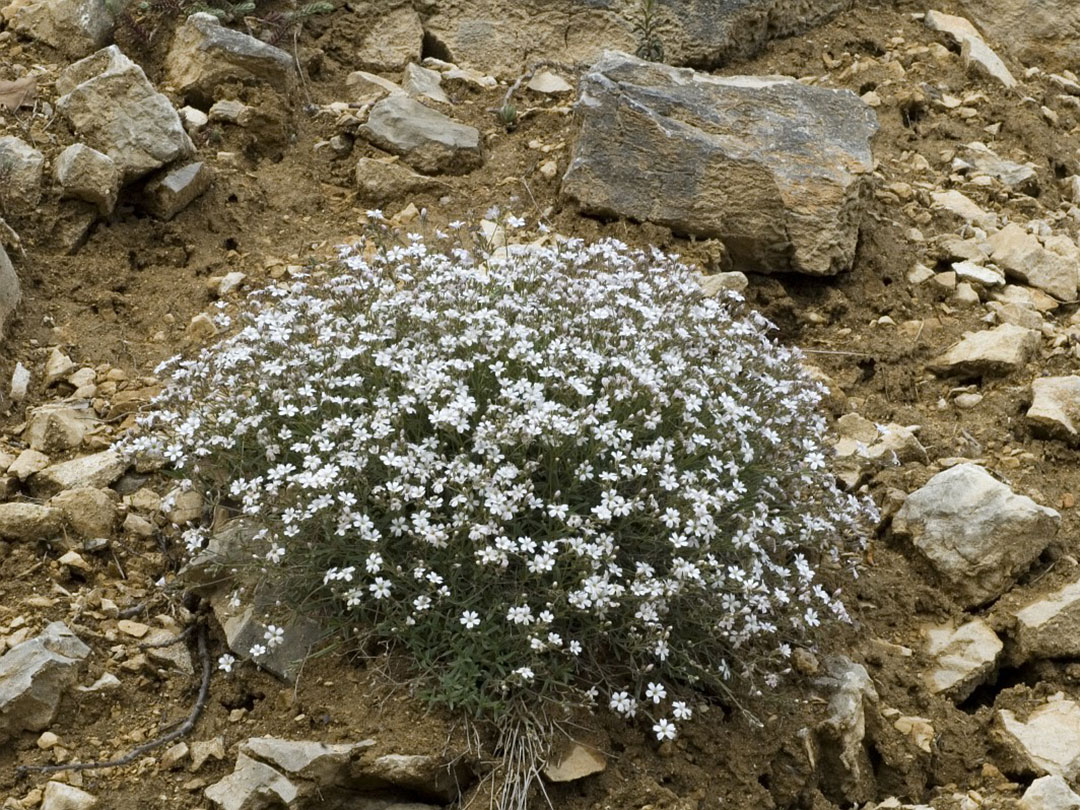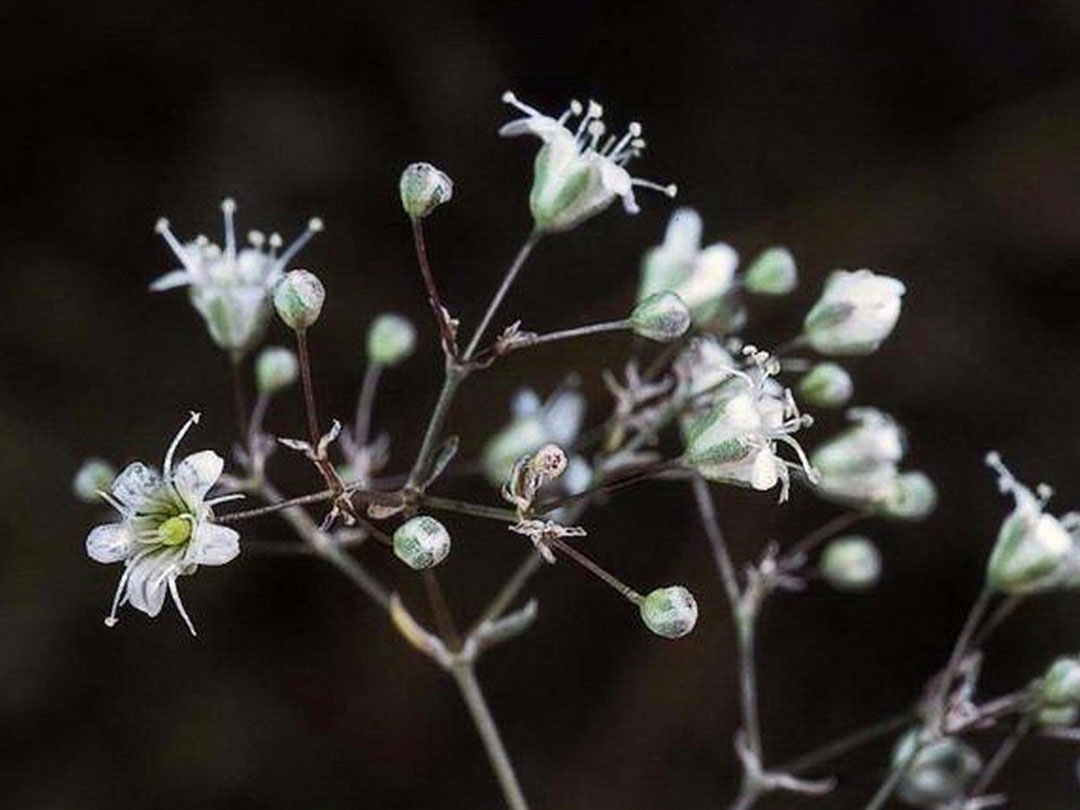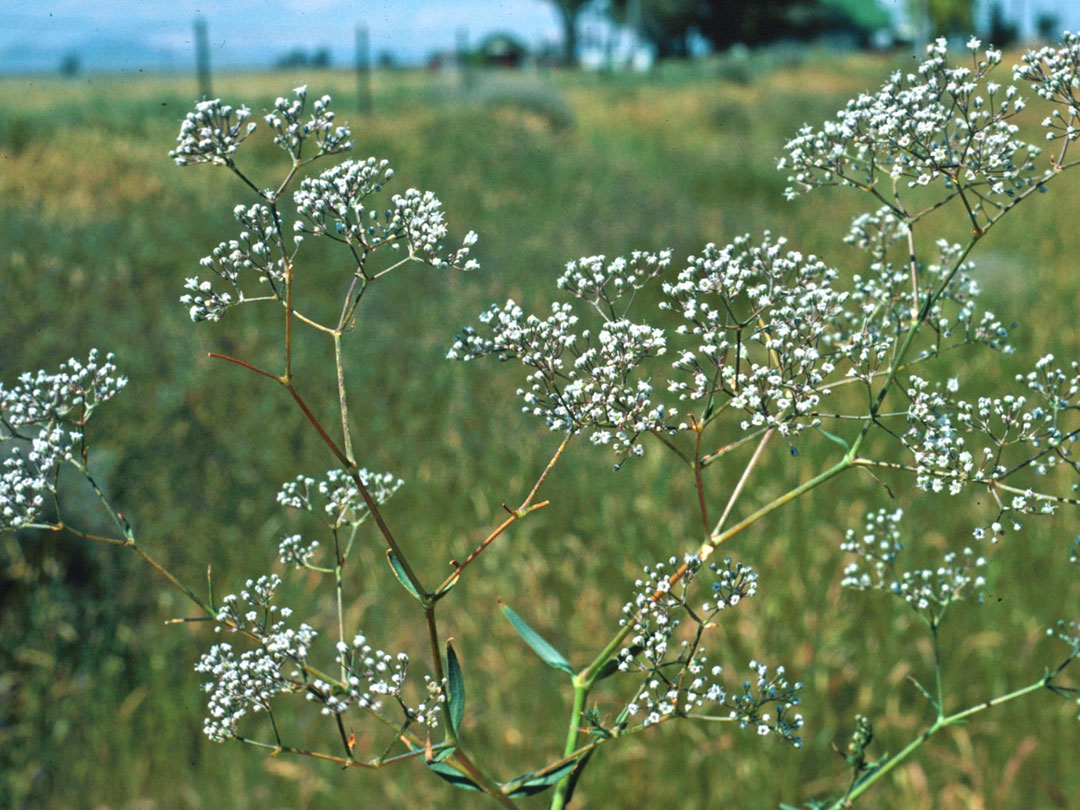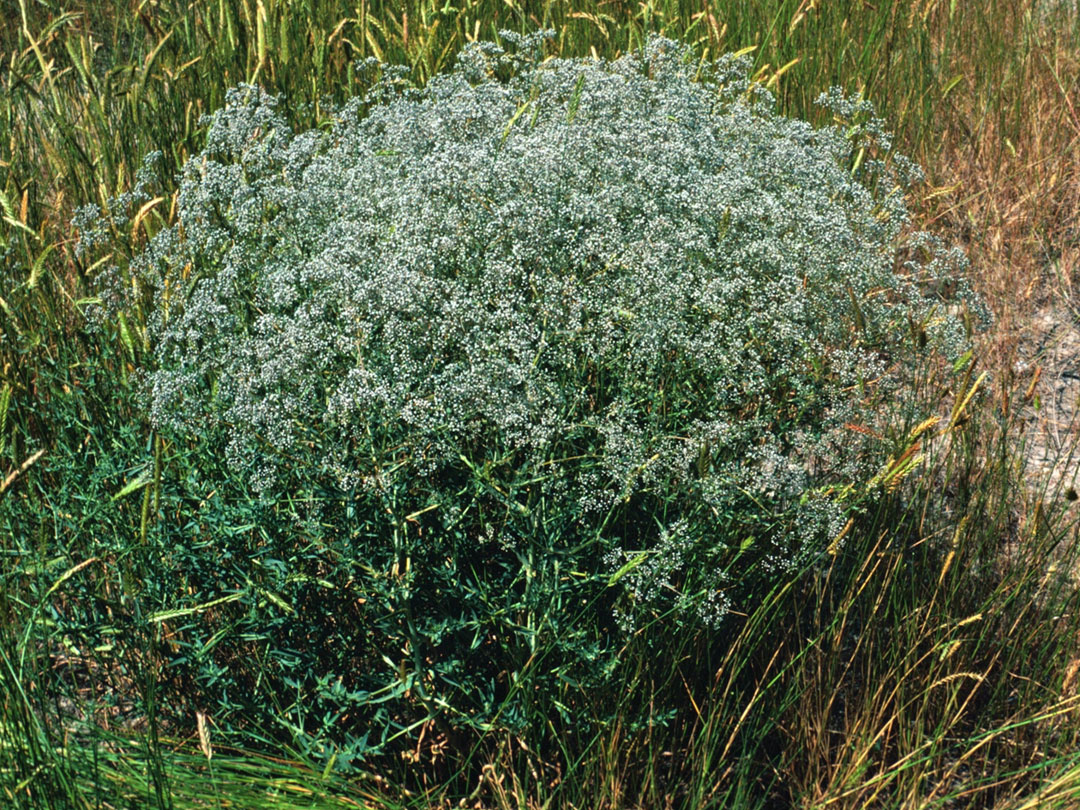Invasive Plant Details
Back to Full ListBaby’s Breath
Latin Name: Gypsophila paniculata
Identification
Flower: Tiny, delicate white or pale pink flowers in airy, open panicles that bloom from mid to late summer.
Leaves: Narrow, lance-shaped, opposite leaves that are blue-green in colour.
Stems: Thin, wiry, and much branched, often giving the plant a bushy appearance.
Growing Environment: Grows in sandy, well-drained soils in open areas, roadsides, and meadows.
Growth Habit: This perennial herb forms a bushy clump and grows 50-100 cm tall. It expands rapidly through both seed dispersal and a deep taproot system, creating dense colonies. In situ, the plant appears as a large, cloud-like mass of small flowers. It often forms thick patches that dominate sandy or disturbed habitats.
Impacts on Environment
Impacts: Highly invasive, especially in sandy soils, where it can form dense, impenetrable stands that displace native plants. When it develops seeds and matures, this species of baby’s breath can break off at the ground and roll long distances across the landscape with the ability to spread over 10,000 seeds per plant.

